Expanding on Andrey's answer, you need to look at the overhead involved before the SSD can signal to the computer that the operation is complete.
For a write, the data must merely be written to an internal RAM cache. Later it will be written to flash memory, along with other 4k blocks and metadata needed to check, error correct and locate it.
For a read, the SSD must first locate the data. The location that the computer wants to read is called the logical address, and does not have a direct relationship with the physical location of the data in flash memory. The SSD translates the logical address into a physical one, based on the geometry of the flash memory (the way the cells are arranged), bad block remapping, wear levelling and various other factors. It then has to wait for any other operations to finish before retrieving the data from flash, then checking it and if required re-reading and applying error correction, possibly even re-writing the whole block somewhere else.
While the total time taken by a write operation may be longer than a typical read operation, the time taken for the SSD to report that the operation completed to the extent that it can process further commands is lower. With large blocks the overhead is not the limiting factor, but with many small blocks it starts to limit read/write speed.
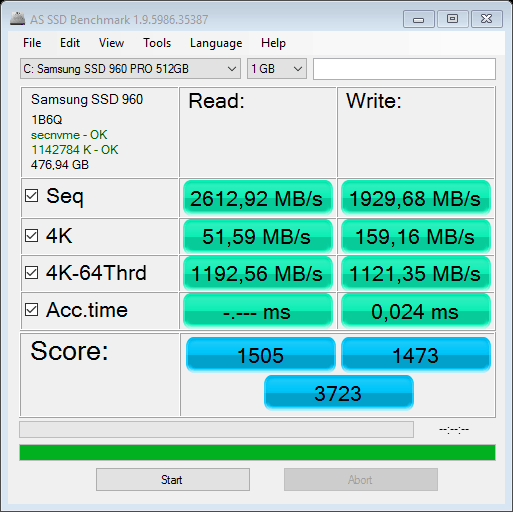
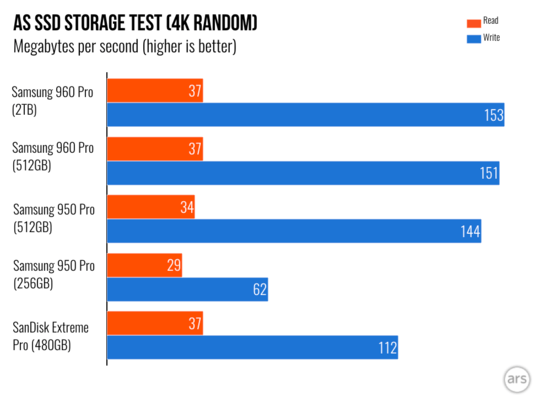 (This graph is not immediately visible in the review, it's the 5th one in the first gallery, you have to click on it)
(This graph is not immediately visible in the review, it's the 5th one in the first gallery, you have to click on it)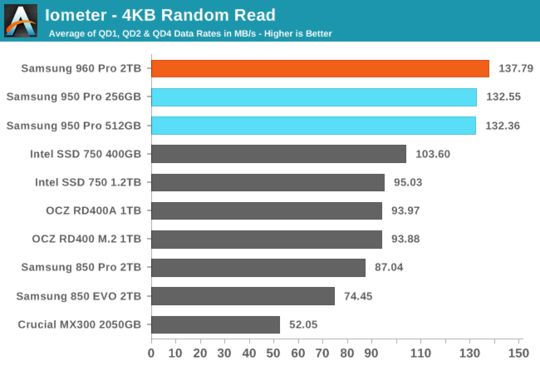
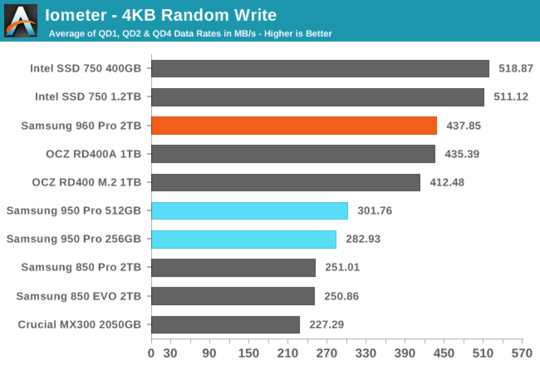
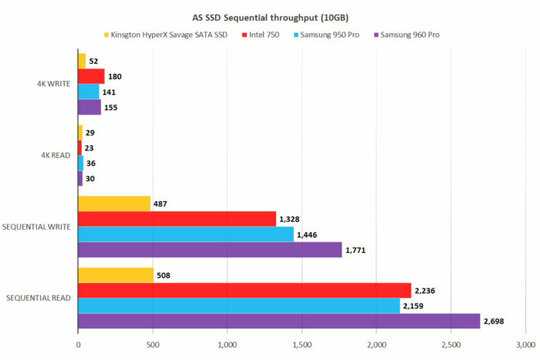 The write speed is in line with yours, but here the drive is even slower at reading. The result is that the ratio is five to one, not three to one.
The write speed is in line with yours, but here the drive is even slower at reading. The result is that the ratio is five to one, not three to one.
And still so much faster than a rotating hard drive! – Zan Lynx – 2017-01-16T20:02:45.023